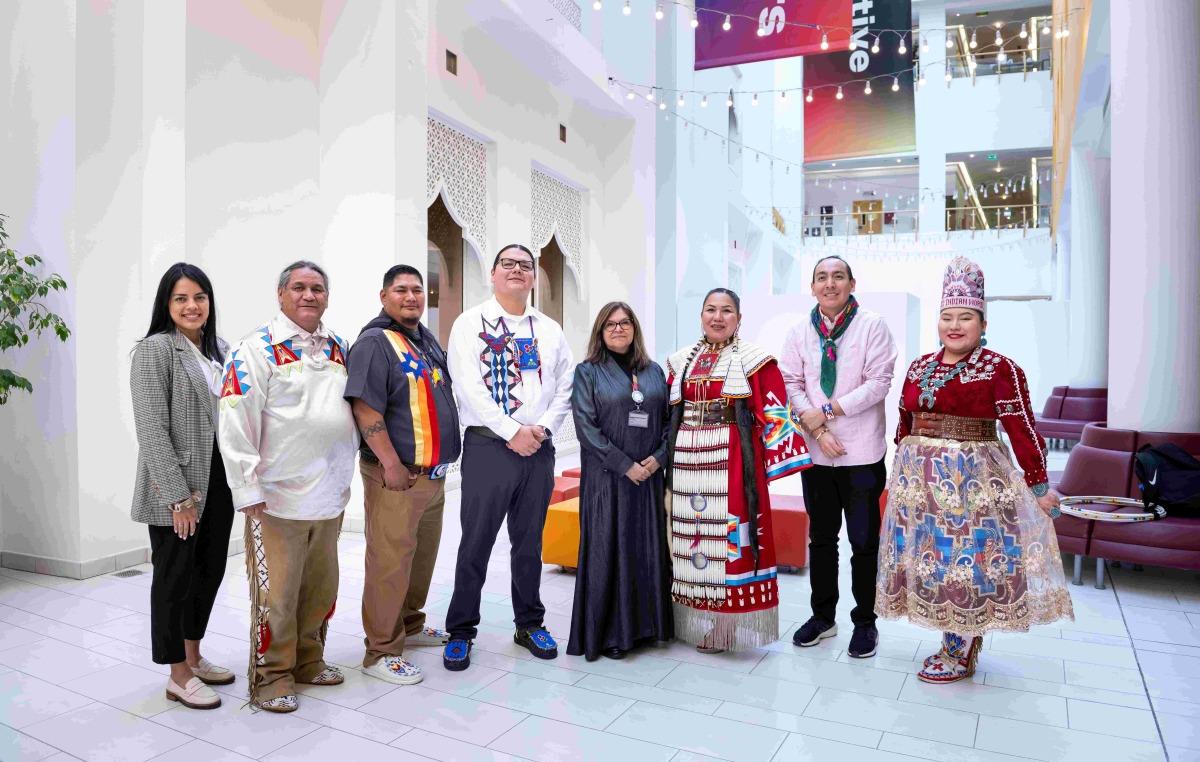
Native American Artists Share Unique Expertise With Vcuarts Qatar Students
Doha, Qatar: A delegation of six Native American artists recently visited Virginia Commonwealth University School of the Arts in Qatar (VCUarts Qatar), a Qatar Foundation (QF) partner university. The visit was jointly organised by the University's departments of Art History, and Strategic Engagement, and the United States (US) Embassy in Qatar. The delegation was accompanied by representatives from the US Embassy in Qatar's Public Affairs Section: Evan Davis, Tracy Castro-Aguilar and Charbel Nasser.
The visiting artists represented the Diné (Navajo), Ute, and Pueblo tribes and included award-winning artists and cultural educators Albert“Nino” Reyos, Tashina Barber, Kassie John, Phillip Manning, Patrick Willie and Charles Denny.
Among them were master flute performers, champion dancers and respected craftsmen and women. Their combined experience spans decades of preserving and sharing traditions through performance, music, art, and storytelling.
The delegation met with VCUarts Qatar's Dean Amir Berbić. Chase Westfall, Curator and Head of Gallery at VCUarts Qatar, guided the visitors on a tour of“Ruins, Derelicts, & Erasure,” a newly opened exhibition at the University. This was followed by a visit to Intangible Lab, a research lab under the University's Institute for Creative Research, where Principal Investigator of Intangible Lab and VCUarts Qatar's Chair of Graphic Design Astrid Kensinger shared an overview of the research conducted in the Lab.
During their interactions with the University's community, the artists shared their unique expertise in bridging traditional knowledge with contemporary presentation. They talked about the need for meaningful cross-cultural exchanges that promote understanding and respect for Indigenous ways of life.
A highlight of the visit was the delegation's interactions with senior Art History students studying the“Art and Ethnography” class taught by Neelima Jeychandran, PhD, Assistant Professor, Art History.
Tashina Barber and Kassie John explained the significance of the colourful regalia they were wearing and how the patterns and designs reflected their tribes' links to the environment, especially the flora, fauna, and naturally occurring materials in their territories.
The artists explained the histories and techniques associated with traditional rug making and weaving.
For the students, watching the artists perform a traditional Native Indian dance set to the beat of Indigenous percussion instruments was an“unforgettable experience.”
Maryam Khalid Al Kubaisi, one of the seniors in the session, said that such interactions help put classroom teaching in perspective.
She said,“Though we learn about Indigenous art and traditions in our class, it's something else to experience it first-hand and interact with practitioners who work hard to preserve their traditions and rituals. I felt a strong connection and mutual respect between our student group and the visitors. For instance, it was beautiful to see how, just like us, they have close-knit family ties; they have a strong sense of community and respect for nature. They work hard to ensure each generation learns and upholds their traditions, even in this highly digital world.”

Legal Disclaimer:
MENAFN provides the information “as is” without warranty of any kind. We do not accept any responsibility or liability for the accuracy, content, images, videos, licenses, completeness, legality, or reliability of the information contained in this article. If you have any complaints or copyright issues related to this article, kindly contact the provider above.






















Comments
No comment